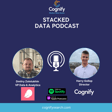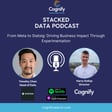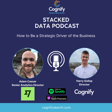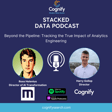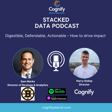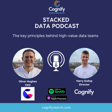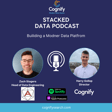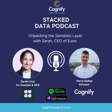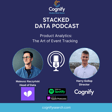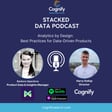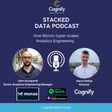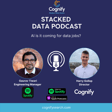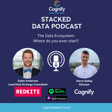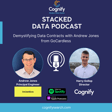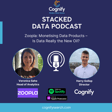
023 - The Semantic Layer, what can it do?
The Semantic Layer, what cand it do?
The modern data stack has transformed the way businesses store, prepare, and consume data. Yet, amidst this data revolution, organisations are continuing to encounter challenges such as data quality, inconsistency, and escalating costs. One solution gaining traction is the semantic layer.
Excited to announce the latest episode of the Stacked Data Podcast, featuring David Jayatillake, the VP of AI at Cube! We explore the transformative impact of the modern data stack and delve into the intricacies of the semantic layer.
David reminisces about being a human semantic layer, translating business logic into usable data in his early career, to setting up an LLM NLP start-up, David has an incredible story and the best insights.
In this episode, we cover:
- David's journey in the Data & AI space
- Understanding the term "semantic layer" and its function within a data infrastructure
- The importance of the semantic layer in the modern data stack
- Specific challenges like data inconsistency and scalability that the semantic layer can effectively address
- Tangible benefits of implementing a semantic layer, including enhanced security and AI capabilities
- Cube’s unique approach to the semantic layer and the value it brings to organisations
- Exciting developments and future plans for Cube in the evolving data landscape
David's insights and expertise make this episode a must-listen for anyone interested in the modern data stack and the role of the semantic layer. Don't miss out on this deep dive into one of the most critical components of data infrastructure!
